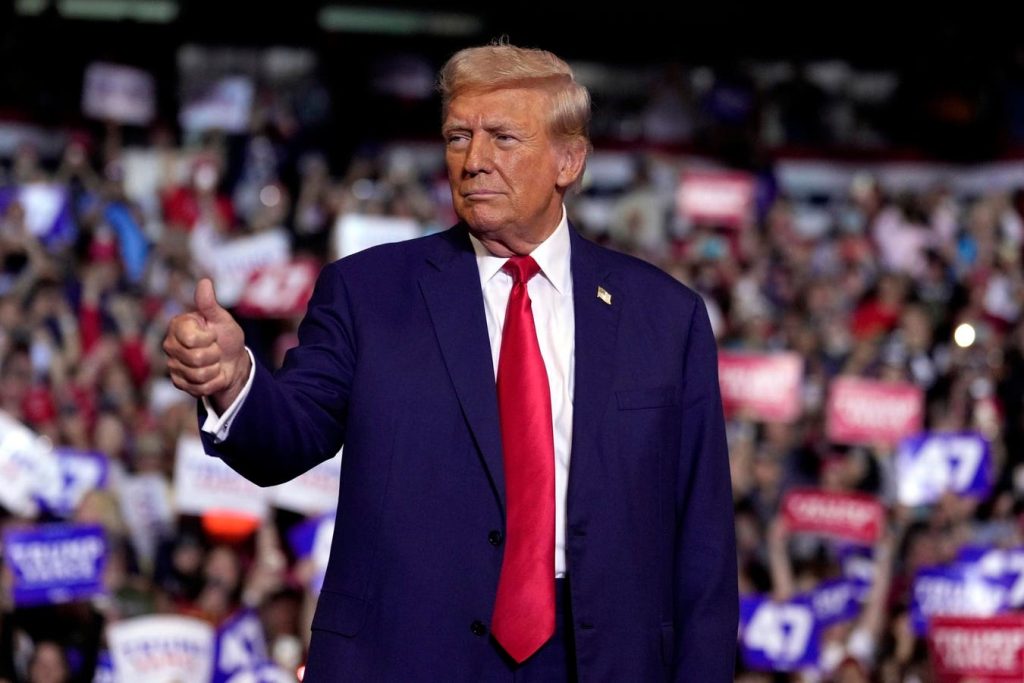In a recent announcement, President-elect Donald Trump revealed plans to impose significant tariffs on imports from Canada, Mexico, and China upon taking office. This move, which involves a 25% tariff on all goods from Mexico and Canada and a 10% tariff on imports from China, sharply contrasts with the economic perspectives of many experts who caution that such a strategy could substantially increase costs for American consumers. Trump’s approach to tariffs has been a central theme of his campaign rhetoric, but his specific proposals now suggest even steeper increases than those initially contemplated during his bid for the presidency.
Critics, including Vice President Kamala Harris and numerous economists, have denounced Trump’s tariff strategy as a proposal that effectively functions as a national sales tax, disproportionately impacting middle and lower-income Americans who could see price increases for essential goods. Research from organizations such as the Tax Foundation indicates that during Trump’s first term, the economic burden of tariffs fell primarily on U.S. consumers and businesses rather than foreign exporters. With the price of consumer goods projected to rise in reaction to tariff increases, analysts, including those from Goldman Sachs, predict that inflation would also see a spike, as U.S. manufacturers take the opportunity to raise prices due to decreased competition from abroad.
The economic implications of Trump’s tariff plans are profound. According to a report from the Peterson Institute for International Economics (PIIE), the proposed tariff increases threaten significant collateral damage to the U.S. economy, including decreased consumer spending, elevated unemployment rates, and a slump in economic growth. Moody’s Analytics supports these concerns, forecasting that Trump’s tariffs could lead to the elimination of approximately 675,000 jobs and a bump in the unemployment rate by 0.4%. Mark Zandi, chief economist at Moody’s, suggests that the economy could face a recession should such tariffs be enacted, a prediction that underscores the potential consequences of protectionist trade policies.
Calculations from PIIE estimate that middle-class households could bear an annual cost of up to $1,700 due to these tariff impositions, with the burden intensifying for lower-income families. The Center for American Progress predicts an even higher cost, anticipating potential increases to as much as $3,900 if broader tariff rates are enforced. This suggests that the implications of Trump’s tariffs extend beyond simple price increases, fundamentally affecting disposable income for millions of American households, especially those already struggling to make ends meet.
While Trump’s targeted tariffs are currently focused on Canada, Mexico, and China, experts warn that there could be broader repercussions affecting other countries. Economists fear that retaliatory measures from impacted nations could create a cycle of escalating tariffs, reminiscent of the trade war initiated during Trump’s first term. Historical precedents indicate that previous tariff conflicts resulted in instability in financial markets and increased tensions among trading partners, further complicating the economic landscape. Responses from trading partners to the proposed tariffs remain uncertain, and the potential for retaliatory tariffs could exacerbate the economic repercussions for the U.S.
Despite the criticisms, there are voices within Trump’s camp who remain optimistic about the economic outcomes of aggressive tariff policies. A spokesperson for Trump stated that former President Trump successfully implemented tariffs during his first term while simultaneously cutting taxes for Americans, claiming a positive impact on job creation and economic growth. However, the viability of this perspective faces significant scrutiny given the wealth of economic analyses warning against the potential damaging effects of such protections, suggesting a complex deliberation surrounding tariff policies as America revisits its trade strategy.

